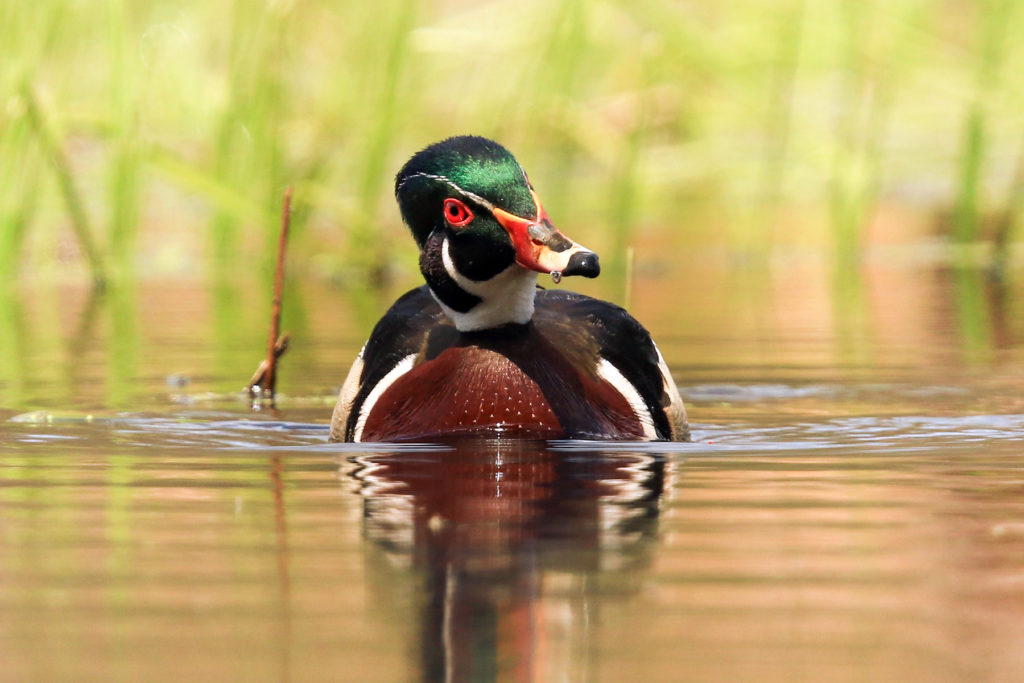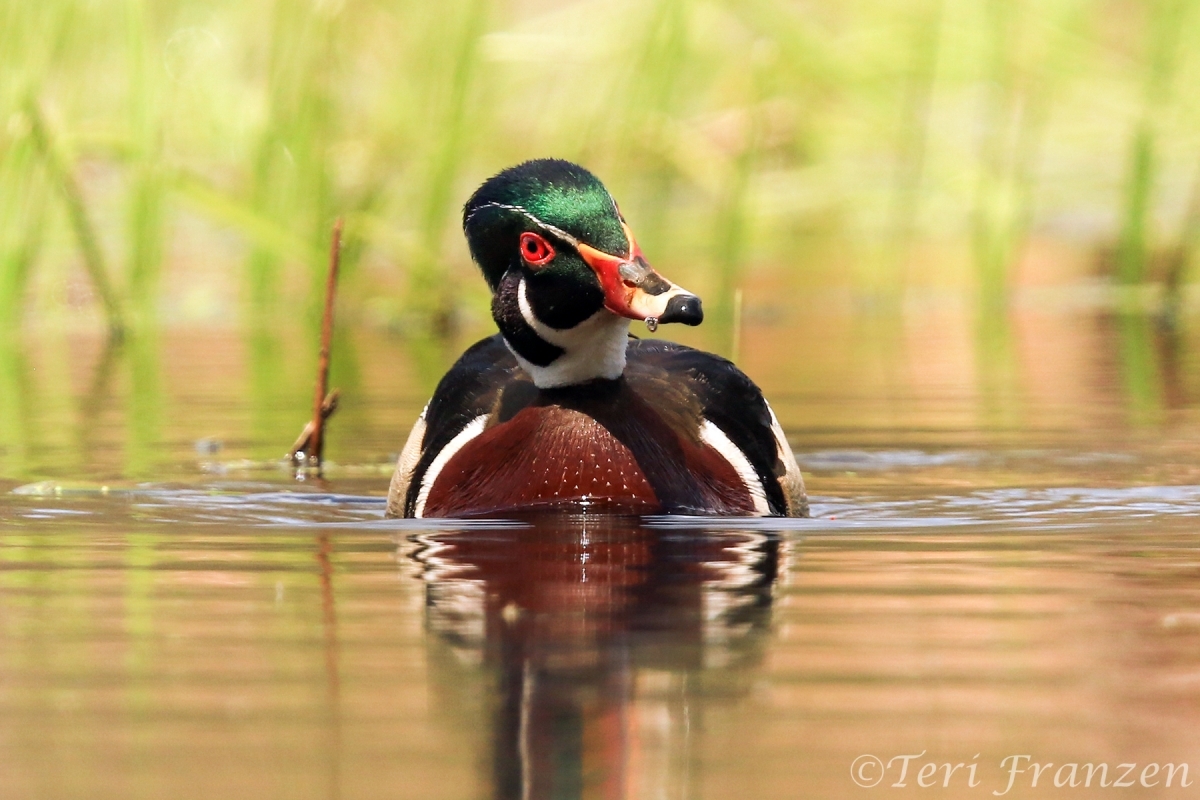From the archives. In 2015 when I was still figuring things out I very stubbornly continued to shoot in JPG. This is one bird with a lot of extremes from black to white and raw mode would have helped to prevent clipping on each end of the spectrum. Also, with this birds vivid colors, over-saturation can occur with JPG that could have been prevented in raw mode. However, this image does capture the low perspective that I aim for, a nice background and an interesting behavior. This drake Wood Duck has detected something overhead and is looking up to see if there is a threat. Wood Ducks are at the bottom of the food chain and hunted by a myriad of creatures including hawks and falcons, wading birds, snapping turtles and humans. They are constantly wary and keeping watch. It also illustrates their exceptional monocular vision.
This image provides a technical lesson (both good and bad) as well as a good natural history story. Therefore, I plan to use it as an aid in an upcoming Natural History Through the Lens photography workshop that I am teaching alongside a team of photographers from the Two Rivers photography club. The workshop is an amazing deal offered through Waterman Conservation Education Center in Apalachin, NY.
If you live in the in the Binghamton/Owego area and are interested in developing or honing your photography and post-processing skills, this is a great deal. This project goes beyond the technical and teaches how to capture interesting story-telling images and what can be learned through your own photography. There is limited space but still a few spots open. We’d love to see you there!
Learn more at the Waterman Center Website



I sure wish I lived closer and could attend! It seems like a wonderful way to learn more. I hope every spot is filled. I am sure you and the other photographers will do an amazing job! And I love those early Wood Duck pictures of yours and the part they play in your personal history and evolution into a nature photographer.